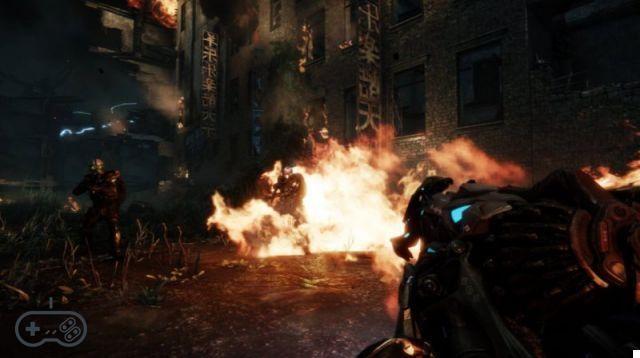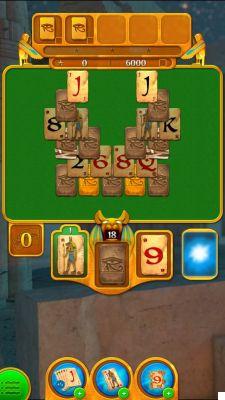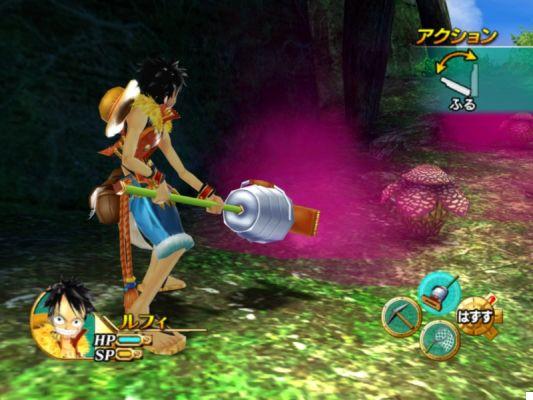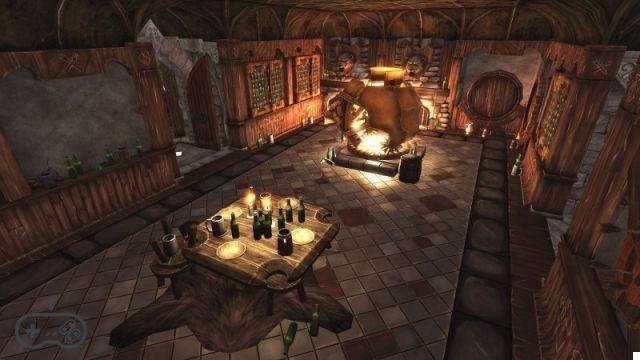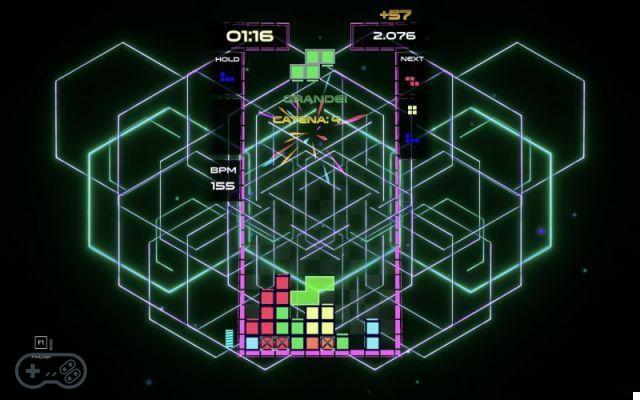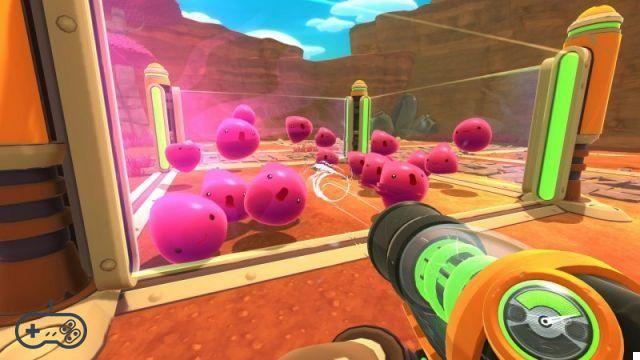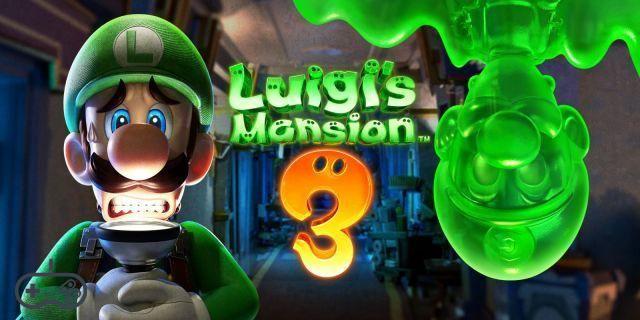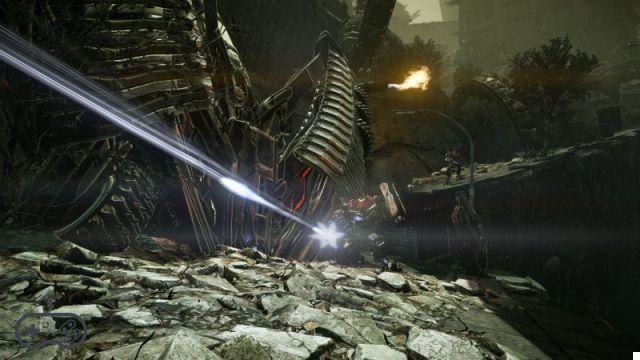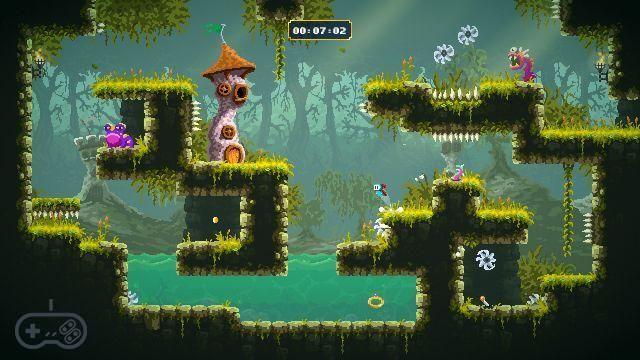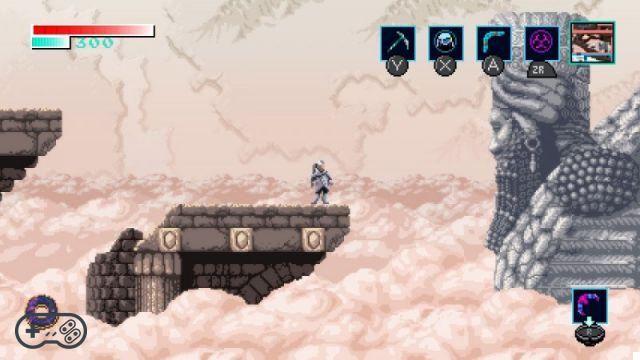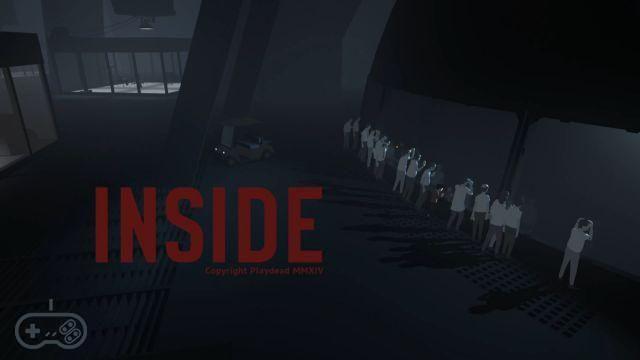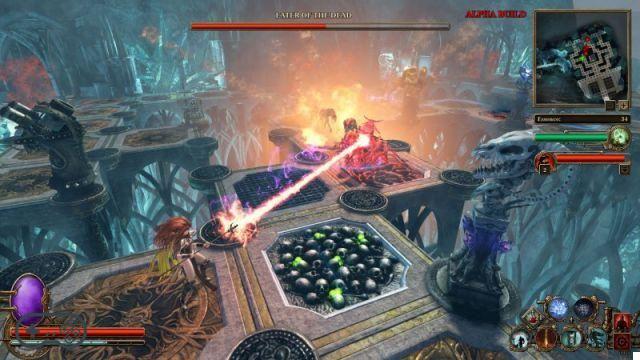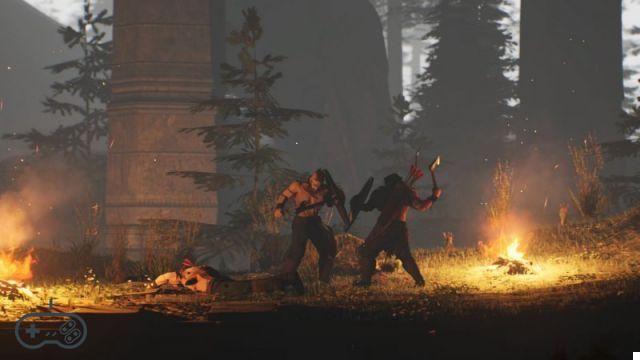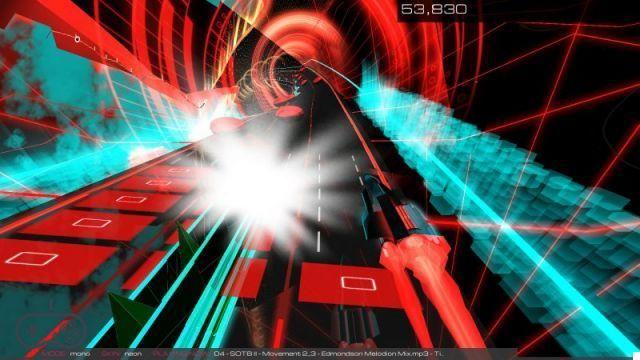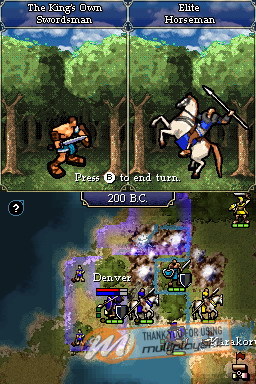
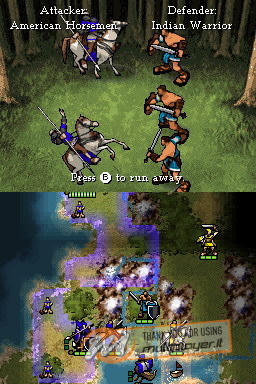
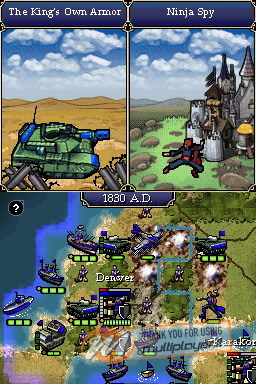
Sid Meier's Civilization Revolution is available for PlayStation 3, Xbox 360, PSP and Nintendo DS.
The tested version is the one for Nintendo DS.
Today we make history
The aim of the game is to make a civilization evolve up to the undisputed domination over the others, to be reached by the fixed date of 2100 AD through various paths, at your choice: "domination" is obtained through military supremacy, defeating enemies; "technological supremacy" is achieved with scientific evolution and the conquest of space; "cultural supremacy" is determined by the construction of the greatest number of "great wonders" or by hosting a certain number of great characters (who appear periodically with the achievement of certain scientific and cultural objectives), while "economic supremacy" requires the accumulation of 20.000 gold coins. The relationship with other civilizations does not necessarily have to be bellicose, there are also various levels of diplomacy, although this version definitely "pushes" towards armed confrontation. The action is marked by turns, each move takes a certain portion of time and, usually, a certain amount of money. You can choose the general approach of your work based on the objective to be pursued, but in any case it is necessary to manage resources in a balanced way and to progress in each sector in order to be able to count on a strong civilization. At the beginning we choose the leader to interpret, and consequently the population that we will have to accompany to victory, each with its own peculiar characteristics. The game world is represented by a stylized map, on which units and cities appear, with movements and usable resources linked to the morphology of the terrain. The static elements, that is the urban settlements, generate wealth based on the resources present, and on the setting of production: it is up to the player to decide which economic typology to orient the city (production of gold, science, food, etc.). What is missing here is the minute segmentation of productivity which allows, in the PC version, practically total control of inputs and outputs, in favor of general simplification.

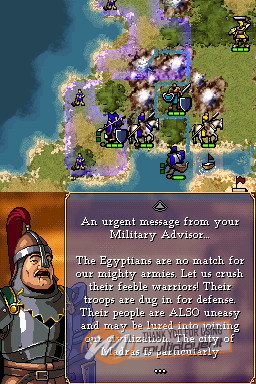
Today we make history
Each city can build, from time to time and within a certain number of turns, a unit, a building or a "wonder". The first are for the most part military units, of different types and relative cost and utility (infantry, cavalry, vehicles, for example); the buildings allow for population increases or strategic upgrades of various types (increased productivity, raising of culture and scientific research), while the great wonders represent the milestones of civilization on the road to cultural domination, bringing some bonuses to the characteristics of the population. The dynamic elements are the units, which carry out the properly strategic component of the game: their main purpose is the discovery of the world and the conquest. Some are used to colonize and create new cities, but most of them are of a military nature, and allow direct clashes against other units or against opposing cities, through fights that are structured according to the typical relationship of forces in the style of "paper, stone. and scissor ", with strengths and weaknesses characteristic for each battalion, which make them more or less advantageous in the clashes against other, certain units (although this first basic specialization must then be added further values given by the experience in battle of the single team, which matures special skills). Obviously, these units undergo changes according to technological progress, transforming and increasing in power with the general evolution of civilization. Parallel to the living action, in the background there is cultural and scientific evolution, which we can address by progressively deciding on which topics to focus the research, which branches out through a tree development of knowledge, reflecting itself in technology and in the cultural level of civilization. Also on the basis of this, new political orders arise from time to time that can be adopted at will to change the structure of the government, with various consequences on the population trend.
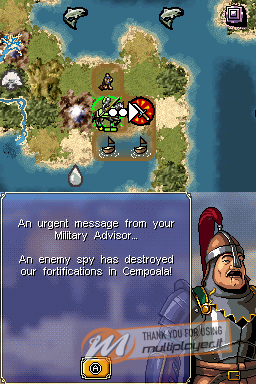
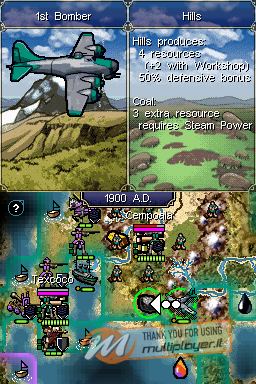
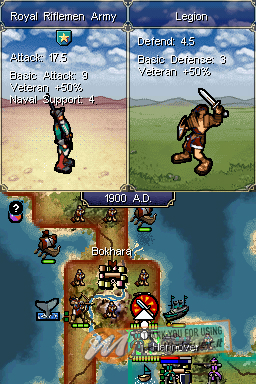
Controls
The interface is excellently adapted to the Nintendo DS controls. Having the game a rather staid pace (we are quite far from the excitement of an RTS), the use of the stylus is less intensive here, leaning towards a combined use of directional cross, keys and touch screen. A certain period of learning is required to master all the options offered, but the rhythm of the shifts tends to make it easier to assimilate the commands. You don't miss the mouse.
The world is smaller
The sector that has suffered most from the cartridge reduction of Sid Meier's classic is, undoubtedly, the graphic one. Made entirely in 2D, the game map closely resembles the beginnings of the series, with a rather confusing rendering of the morphological elements and units present on the field, due to the stylization, the reduced size of the screen, and the shrinking of the game world characteristic of this Revolution version. During the fights, there are short animated skits similar to those characteristics of Advance Wars, which illustrate the progress of the battle in a moment. There is a certain general anonymity that permeates the aspect of the game, which could perhaps have been made in 2D, but possibly with an extra touch of personality, to make everything more enjoyable. However, this is a marginal element, which in any case does not disturb the inclusion in the player between the gears of the perfect game mechanics. The audio, on the other hand, stands at decent levels, without distinguishing itself in a particular way and contributing a little to underline the somewhat subdued technical aspect of the product.
Note the presence of online multiplayer, via Nintendo Wi-Fi Connection. A maximum of 4 players can take part in multiplayer games, which thanks to the turn-based structure are not affected by latency or connection problems. There are still a few players available on the square, but once found the game runs pretty smooth: the only thing to do, if anything, is the impossibility of acting in any way during the turn of others. At least the possibility of modifying those aspects of city management that do not affect the use of the game turn would have been desirable.
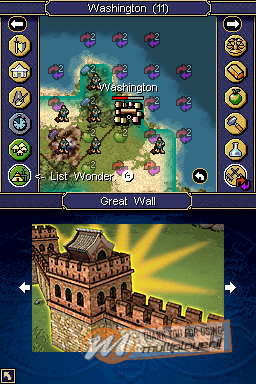
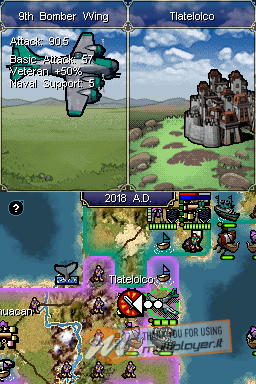
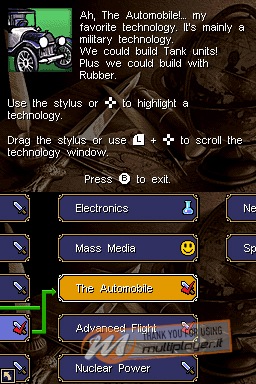
Comment
The risky Firaxis experiment must undoubtedly be promoted. Civilization Revolution manages to bring the complexity of Sid Meier's management software to consoles, without having to sacrifice himself on the altar of videogame mainstraming: becoming accessible, certainly, but without identity upheavals. On the Nintendo DS, in particular, the feat was commendable: the heart of Civilization is all inside this cartridge, albeit in a reduced version technically and structurally pruned from the more complex offshoots of the PC version. In this portable context, the strong increase in the pace of play imposed by Revolution is also better justified, which by placing aggressive enemies immediately outside the borders forces direct confrontation (most of the times of a military nature), and makes the games much shorter and more agitated. compared to the reflective rhythm of the original. The only drawback of the production is represented by a certain anonymity in the technical realization, which could have overcome the hardware limitations with a more characteristic style at least in the graphic system.
For
- Deep and complex (almost) like the original
- Many different game solutions
- Online multiplayer present
- Quite dull graphics
- It tends to be quite short
- Some icons and graphic representations are unclear
The Civilization revolution is represented by the clearance of the strategic / management game par excellence in the "frivolous" world of consoles, actually quite mature now to welcome even those titles that until now were the exclusive prerogative of PCs. Here then - as happened with Will Wright - the signature of Sid Meier goes to rest on the packaging of a Nintendo DS game: something unthinkable, until a few years ago. On the other hand, the Nintendo laptop has already demonstrated its versatility for some time, and the ability to adapt in a particular way to RTS and management systems, managing, in those games conceptually linked to the use of the mouse, even to reproduce a gaming experience more enjoyable than major consoles can, in spite of computational superiority. With Civilization Revolution we are faced with a compromise, however: the version specially designed for consoles is in fact modified compared to the original title for PC, with some leafless necessary to make it accessible to the average user of gaming machines. With this, we do not mean that Revolution is a vulgarization of Civilization: the effort made in trying to keep as many features as possible intact as compared to the original is commendable, but it was necessary to create a product that deviated from the sedimented and traditionalist structure of the PC series. A new beginning, therefore, a re-invention of Sid Meier's masterpiece for a new audience. The results are especially noticeable in the facetious graphic aspect (although in this version the game map closely resembles the first chapters of the original series), in the interface adapted to the controllers (in this case the joint use of the keys and the stylus) and in a decidedly increased pace of play. Truly remarkable - after the excellent result obtained by Firaxis in simplifying the original game structure in a new version for consoles - the ability demonstrated in being able to then transfer everything inside a cartridge for Nintendo DS, with losses practically only found in the graphic and sound sectors.





